There are ground structures with different properties in nature. These can have different types such as sand, clay, mud, ballast, etc. In such grounds, different types of geogrid materials are used for reinforcement. At this point geogrid selection shall be based on calculations specific to the bearing capacity of the ground and forces to apply. In areas with high water movements, geotextile materials used in conjunction with geogrid will act as a filter between layers, preventing grain movements between fillings.
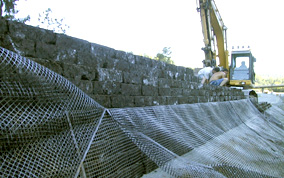
Retaining Wall Reinforcements
Generally retaining walls are built using concrete or stone paving to resist lateral soil pressure. It can be built using soil support principle without wall external support.
Supported retaining walls can be as steep as 90° slope. Active support creates a small lateral displacement of the building. Thus paving has a protective surface and an aesthetic function.
Supported retaining walls can be as steep as 90° slope. Active support creates a small lateral displacement of the building. Thus paving has a protective surface and an aesthetic function.
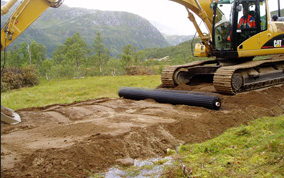
Soil Amendment
Soil amendment is creating ground on places that were previously sea, river or ports for buildings or infrastructure areas. Level of the amended soil can be below water level or as in water management units above water level.
In such cases structure of the bottom soil is weak and needs to be reinforced. In many projects, stones are used to increase load bearing capacity of structures to be built.
In such cases structure of the bottom soil is weak and needs to be reinforced. In many projects, stones are used to increase load bearing capacity of structures to be built.
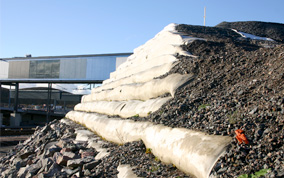
Banks
Foundation of sets under soft soil can be supported underground to prevent collapses and to reduce subsidence that differ under the soil.
Banks are generally built with side slopes at 1:2 to 1:3 gradients. Side slopes can be made vertical using supports. Shear stress acts between the bank and the soil underneath due to lateral soil pressure on the bank. Reinforced banks can be built using different filling material combined with other stabilization techniques.
Banks are generally built with side slopes at 1:2 to 1:3 gradients. Side slopes can be made vertical using supports. Shear stress acts between the bank and the soil underneath due to lateral soil pressure on the bank. Reinforced banks can be built using different filling material combined with other stabilization techniques.
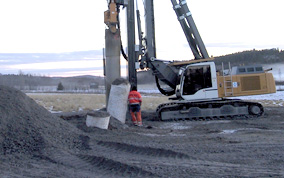
Piling Applications
Pile Driving is a deep foundation technique consisting of drilling and installing piles on the soil at intervals based on designed piling distances. After piling, each pile is fitted with a pile head to distribute its weight on an area larger than the weight a single pile can support on its own.
Advantage of piling to well boring is that the earth displaced during piling compresses the soil and creates a larger friction resulting in increased load bearing capacity.
Advantage of piling to well boring is that the earth displaced during piling compresses the soil and creates a larger friction resulting in increased load bearing capacity.
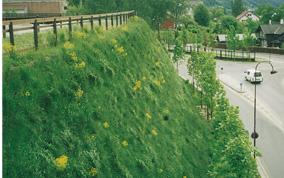
Slope Reinforcement
Supports in slopes or cliffs can be used for different purposes. Supports can be used to create slopes that cannot be obtained with natural filling material.
Since natural filing mass can be built with a natural slope, supported slopes can have steeper slopes. Design concept of supported steep slopes in basically same with reinforced retaining walls. The aim of the support is to handle lateral soil and connect possible fault extrusions to the front of the possible final fault plane.
In such applications, TeleVev ® and TeleGrid ® can be used
Since natural filing mass can be built with a natural slope, supported slopes can have steeper slopes. Design concept of supported steep slopes in basically same with reinforced retaining walls. The aim of the support is to handle lateral soil and connect possible fault extrusions to the front of the possible final fault plane.
In such applications, TeleVev ® and TeleGrid ® can be used
